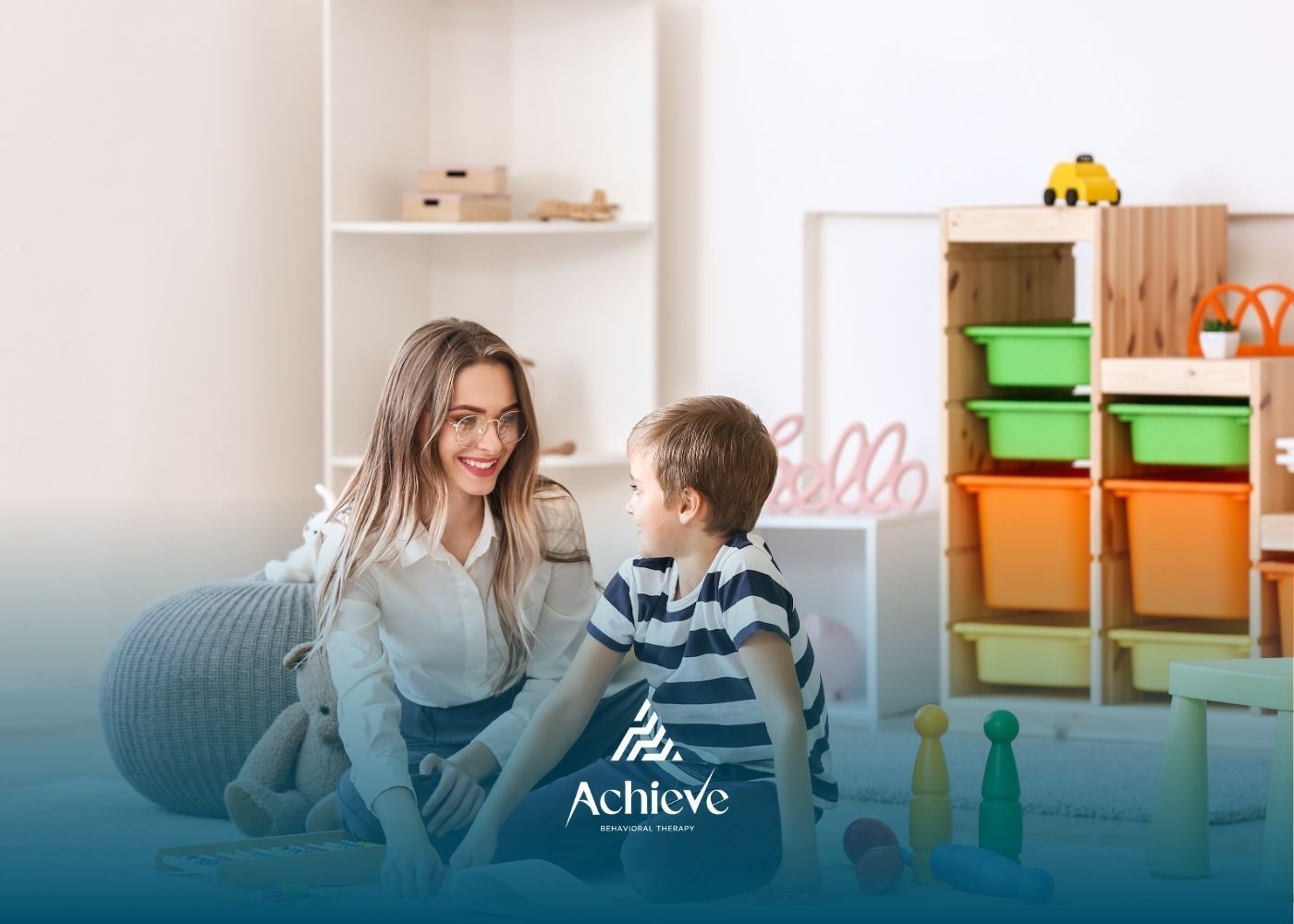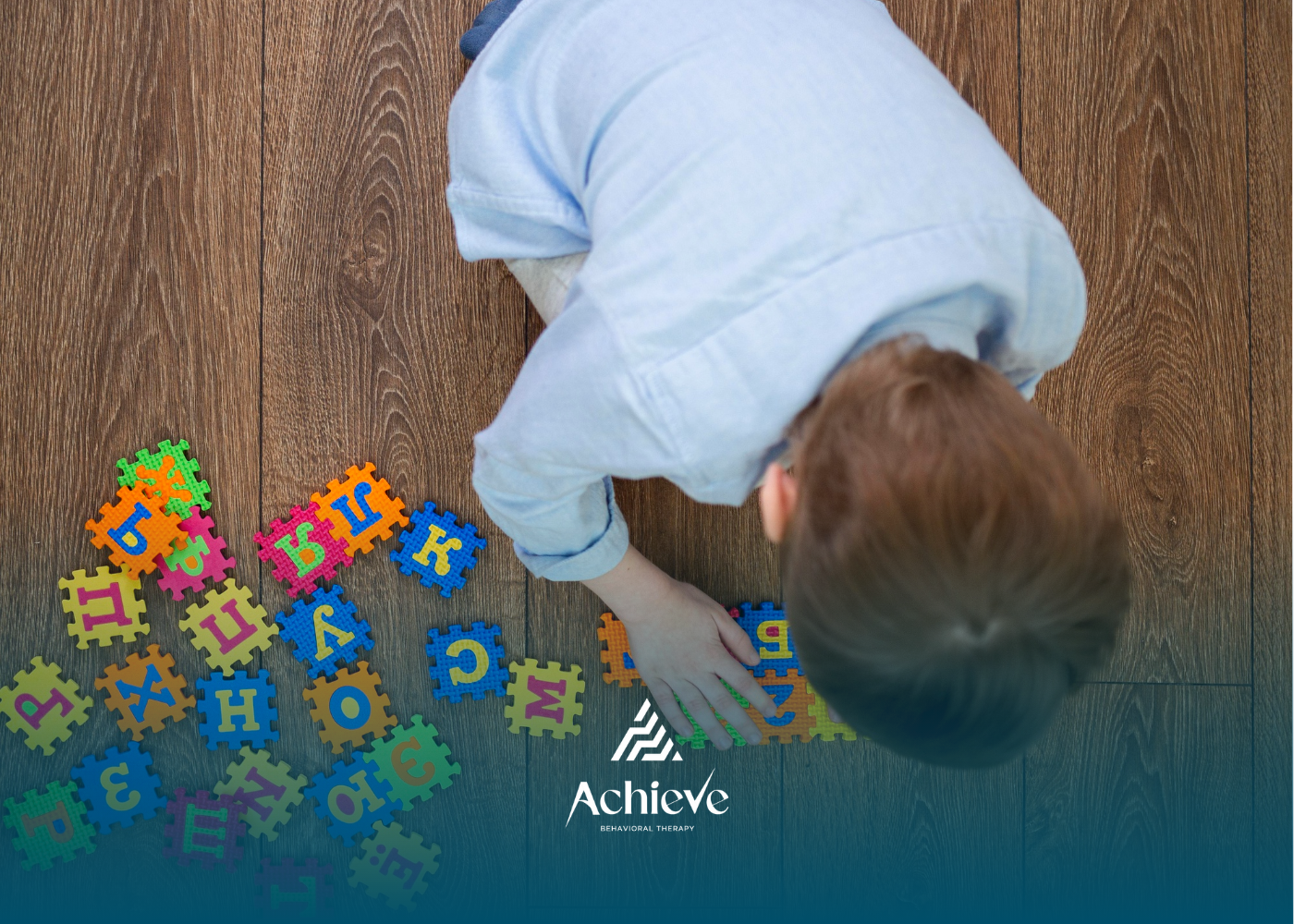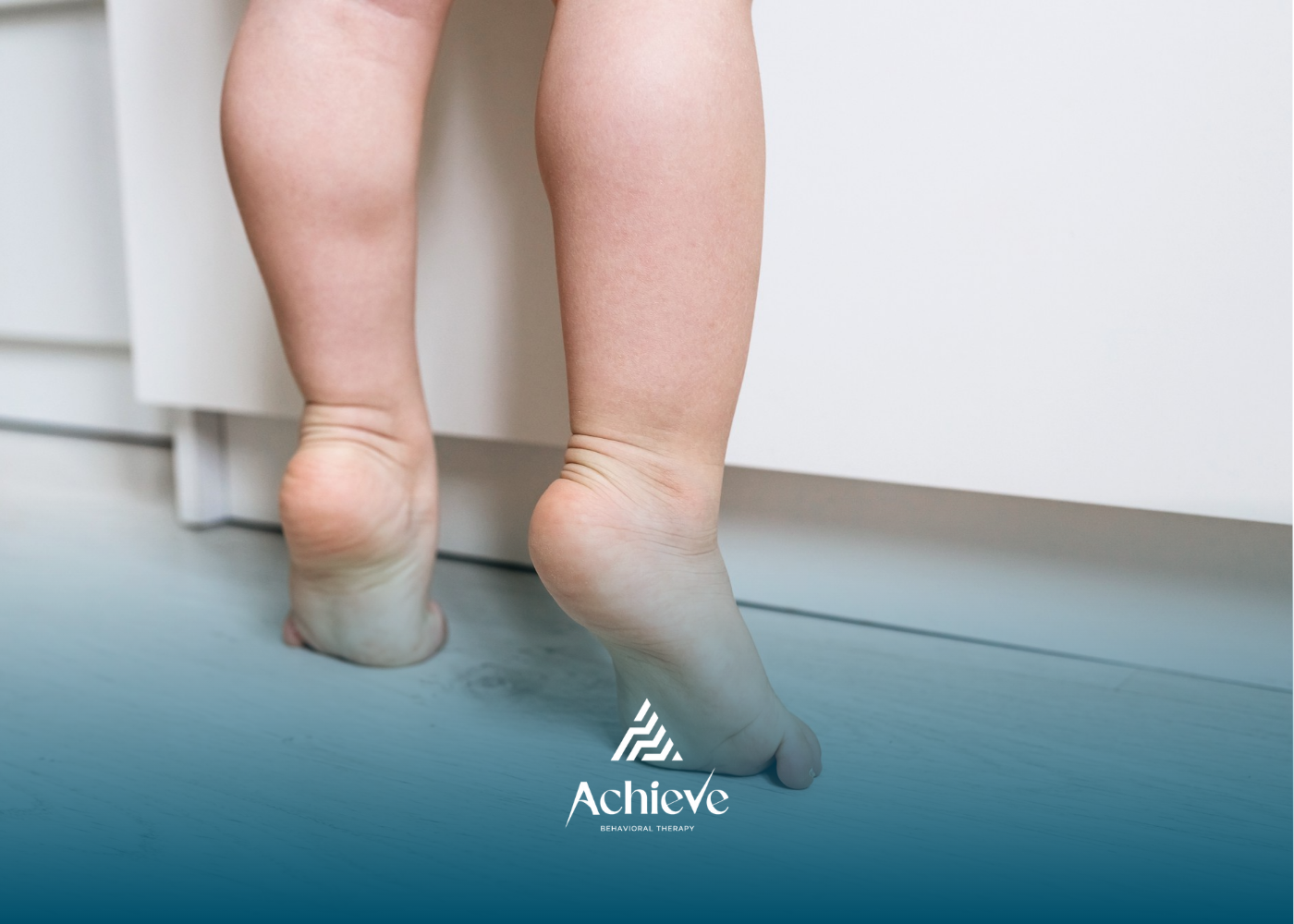How ABA Therapy for ADHD Enhances Focus and Learning

Navigating the challenges of Attention Deficit Hyperactivity Disorder (ADHD) can be tough, but you're not alone. Many parents seek effective ADHD treatment options to help their children thrive. One promising approach is Applied Behavior Analysis (ABA) therapy. This form of behavioral therapy uses structured, evidence-based methods to help children learn new skills and reduce problematic behaviors. Let's explore how ABA therapy can enhance focus and learning, offering a supportive path toward improving your child's quality of life.
Understanding ADHD and Its Impact on Focus and Learning
Attention deficit hyperactivity disorder (ADHD) is a neurodevelopmental condition that presents unique challenges for children. The core ADHD symptoms, including inattention and hyperactivity, can significantly impact a child's ability to concentrate in school and manage daily tasks. These difficulties often lead to behavioral challenges that affect their learning environment.
Understanding how these symptoms manifest is the first step toward finding the right support. Disruptive behaviors can strain relationships with peers and family members, making effective intervention crucial. Next, we will look at the specific symptoms of ADHD and how they affect a child's life.
Key Symptoms and Challenges of ADHD in Children
The primary symptoms of ADHD can be grouped into three main categories: inattention, hyperactivity, and impulsivity. Inattention makes it difficult for a child to stay focused on tasks, follow instructions, and stay organized. They might seem forgetful or easily distracted, which can be mistaken for carelessness.
The hyperactivity disorder aspect often presents as constant restlessness, fidgeting, or an inability to stay seated when expected. Impulsive behaviors can include interrupting others, blurting out answers in class, or having trouble waiting for their turn. These actions are not intentional acts of defiance but rather a core part of the condition.
These symptoms create significant challenges, leading to disruptive behaviors at home and school. Some common challenges include:
- Difficulty completing homework or school assignments.
- Trouble listening during conversations.
- Acting without thinking about the consequences.
- Struggling to manage time and daily routines. ABA therapy can specifically help by breaking down tasks into manageable steps and using reinforcement to reward focus and task completion, directly addressing these problem behaviors.
How ADHD Affects School Performance and Daily Life
The challenges of ADHD extend far beyond the classroom, impacting nearly every aspect of a child's daily life. Poor school performance is a common consequence, as difficulties with focus and organization make it hard to keep up with assignments and retain information. This can lead to frustration and a decline in academic confidence.
Beyond academics, essential life skills are also affected. Simple routines like getting ready for school or completing chores can become a daily struggle. Poor time management skills make it difficult to plan ahead or finish tasks on schedule, which can cause stress for both the child and the family. These problem behaviors can ultimately affect a child's overall quality of life.
ABA therapy helps by teaching practical strategies for time management and organization. By using positive reinforcement for completing tasks and demonstrating focus, ABA therapy can improve a child's ability to manage daily responsibilities, leading to better school performance and a higher quality of life.
Introduction to ABA Therapy
Applied Behavior Analysis (ABA) therapy is a structured, evidence-based approach designed to improve socially significant behaviors. While often associated with autism, its principles of behavior modification are also highly effective for children with ADHD. ABA therapy works by analyzing the factors that influence behavior and then implementing a targeted treatment plan.
The goal is to teach new skills and reduce unwanted behaviors through systematic methods. By breaking down complex goals into smaller steps, ABA therapy provides a clear path for children to learn and succeed. Let's look closer at what ABA is and the core principles that make it work.
What Is Applied Behavior Analysis (ABA)?
Applied Behavior Analysis (ABA) is a scientific approach to understanding and changing behavior. It's built on behavioral principles that explain how learning takes place. When applied in therapy, ABA focuses on improving specific, observable behaviors, such as social skills, communication, and academics, while decreasing behaviors that interfere with learning.
A key part of ABA is the functional behavior assessment (FBA). This process helps therapists understand why a child engages in certain behaviors by identifying the triggers and consequences. This information is then used to develop a personalized intervention plan that addresses the root cause of the behavior, rather than just the symptoms.
A typical ABA therapy session for a child with ADHD is highly structured yet engaging. It might start with a review of goals, followed by activities that break down skills into small, teachable moments. For example, a therapist might work on increasing attention during a game or completing a multi-step task with prompts and rewards. The session is dynamic, with the therapist constantly collecting data to track progress.
Core Principles of ABA Therapy
The effectiveness of ABA therapy stems from its core principles, which are systematically applied to encourage positive change. The most fundamental of these is positive reinforcement. This involves providing a reward immediately after a desired behavior occurs, which makes the child more likely to repeat that behavior in the future.
Therapists use various reinforcement techniques to motivate children. Another key principle is breaking down complex skills into small, teachable steps, a method often used in discrete trial training (DTT). This structured approach helps children learn new skills one piece at a time, building confidence with each success.
Common goals and target behaviors in ABA for ADHD often revolve around executive functioning and self-regulation. Core principles are applied to achieve goals like:
- Increasing on-task behavior during homework.
- Reducing impulsivity by teaching waiting skills.
- Improving organizational skills for daily routines.
- Following multi-step instructions without getting distracted.
Differences Between ABA for ADHD and Autism
While Applied Behavior Analysis is a well-known therapy for individuals on the autism spectrum, its application for ADHD differs in focus and goals. The core principles remain the same, but the customization of the therapy is key to addressing the unique needs of a child with ADHD versus one with autism.
Understanding these differences is crucial for setting realistic expectations and achieving the best outcomes. The therapy must be tailored to target the specific challenges associated with each condition, whether they are related to social communication or executive functioning.
Unique Goals for ADHD Treatment
When ABA is used as an ADHD treatment, the unique goals are centered on executive functioning and self-regulation. Unlike ABA for autism, which often prioritizes social communication and reducing repetitive behaviors, the focus for ADHD is on skills like attention, organization, and impulse control. The treatment plan is designed to help children manage the core symptoms of ADHD.
For instance, a primary goal might be to increase the amount of time a child can stay seated and focused on a school-related task. Another could be to reduce instances of interrupting others by teaching them to wait their turn. These goals directly address the hyperactivity and impulsivity that characterize the disorder.
The main difference in ABA for ADHD versus autism lies in these target behaviors. For ADHD, the therapy aims to build skills that improve executive functions, such as planning, time management, and task initiation. In contrast, for autism, goals might be more focused on developing social reciprocity, nonverbal communication, and expanding interests.
Overlapping Strategies and Customization
Despite the different goals, many ABA techniques and strategies overlap when treating ADHD and autism, especially since the conditions can co-occur. Behavior analysis principles, such as positive reinforcement and breaking down tasks, are effective for both. The key is customization based on the individual child's needs.
A functional behavior assessment (FBA) is used in both cases to understand the "why" behind a behavior before creating a plan. This allows the therapist to select the most appropriate ABA techniques, whether the goal is to improve social skills in a child with autism or enhance focus in a child with ADHD.
The main difference is not the strategies themselves, but how they are applied. Customization might involve:
- Using reinforcement to reward staying on task for ADHD.
- Using the same reinforcement to reward eye contact for autism.
- Applying task analysis to teach organizational skills for ADHD.
- Using task analysis to teach a self-care routine for autism.
How ABA Therapy Improves Focus in Kids with ADHD
One of the primary benefits of ABA therapy for children with ADHD is its direct impact on improving focus and increasing attention span. The therapy employs specific, evidence-based techniques that are designed to build concentration and reduce distractions. By systematically rewarding on-task behavior, children learn to sustain their attention for longer periods.
This process helps reinforce positive behaviors related to learning and task completion. The structured nature of ABA provides the consistency that children with ADHD often need to thrive. Let's explore the specific techniques used to achieve these improvements.
Techniques for Increasing Attention Span
ABA therapy uses several effective methods to help children with ADHD increase their attention span. Central to this is the use of powerful reinforcement techniques. A therapist might start by rewarding a child for just a few seconds of focus and gradually increase the time required to earn a reward. This shapes their ability to concentrate for longer durations.
A structured routine is also a critical component. Predictability helps reduce anxiety and mental effort, freeing up cognitive resources for focusing on the task at hand. Visual aids, such as timers or checklists, provide concrete cues that help a child understand expectations and track their own progress, making it easier to stay engaged.
ABA specifically helps improve focus by:
- Using a timer to visually represent how long a child needs to focus.
- Breaking down a large task into shorter, more manageable steps.
- Providing frequent, immediate praise or rewards for staying on task.
- Gradually increasing the length of work intervals.
Reducing Distractions and Building Concentration
Building concentration requires more than just increasing attention; it also involves learning to manage distractions. ABA therapy addresses this through behavioral modification strategies that help children identify and ignore things that pull their focus away. For example, a therapist might help a child create an organized, distraction-free workspace for homework.
Improving time management is another way ABA helps build concentration. By using visual cues like schedules and checklists, children learn to allocate their attention appropriately and transition smoothly between tasks. This structure reduces the mental chaos that often accompanies ADHD and makes it easier to concentrate on one thing at a time.
These behavioral modification techniques empower children with self-regulation skills. Instead of being reactive to their environment, they learn proactive strategies to control their focus. This might include taking short, scheduled breaks to reset their attention, a skill that serves them well both in and out of therapy.
Promoting Academic and Learning Skills with ABA
Beyond just improving focus, ABA therapy can directly promote academic and learning skills. This form of behavior therapy equips children with the tools they need to succeed in a school environment. The strategies used in ABA help make academic work feel less overwhelming and more achievable.
By focusing on foundational skills like task completion and organization, ABA sets the stage for academic growth. Let's look at how specific techniques like task analysis and reinforcement can be used to build better study habits and improve school performance.
Task Analysis and Breaking Down Assignments
One of the most powerful ABA techniques for academics is task analysis. This involves taking complex tasks, like writing a book report or solving a multi-step math problem, and breaking them down into a series of small, manageable steps. For a child with ADHD, a large assignment can feel insurmountable, but a list of simple steps feels doable.
This behavior modification strategy teaches children how to approach their work systematically. Instead of not knowing where to start, they have a clear roadmap to follow. Completing each small step provides a sense of accomplishment and momentum, making it easier to see the entire project through to completion.
Common goals addressed through task analysis include:
- Completing multi-page homework assignments.
- Organizing a backpack for school.
- Studying for a test over several days.
- Writing a paragraph with an introduction, body, and conclusion. This approach not only helps with task completion but also teaches a critical life skill for managing large projects.
Encouraging Positive Study Habits Through Reinforcement
Positive reinforcement is the engine that drives the development of good study habits in ABA therapy. When a child demonstrates positive behaviors related to schoolwork—such as starting homework without being asked or studying for a test—they receive a reward. This reward reinforces the behavior, making it more likely to happen again.
The reinforcement techniques used are tailored to the individual child. For some, praise is enough. For others, a token system where they earn points toward a larger reward works best. The key is that the reinforcement is immediate and consistent, creating a strong link between the desired study habit and a positive outcome.
By consistently applying these methods, ABA therapy helps shift a child's mindset about schoolwork. What was once a source of conflict and frustration can become an opportunity to earn rewards and feel successful. This process not only improves grades but also builds self-esteem and a more positive attitude toward learning.
Behavior Management Strategies in ABA for ADHD
Effective behavior management is at the heart of ABA therapy for ADHD. The approach moves beyond simply reacting to problematic behaviors and instead focuses on proactively teaching new skills. By applying core behavioral principles, therapists help children learn to manage their own actions and reduce impulsivity and hyperactivity.
This structured method gives children the tools they need to navigate social and academic situations successfully. We will explore how setting clear goals and directly addressing the core symptoms of ADHD are fundamental parts of this process.
Setting Measurable Goals and Tracking Progress
A hallmark of ABA therapy is its focus on data. Everything starts with setting specific, measurable goals based on an initial assessment of the child. Instead of a vague goal like "improve focus," an ABA goal would be "increase on-task behavior during independent reading from 2 minutes to 5 minutes." This clarity makes tracking progress straightforward.
Throughout therapy, the therapist continuously collects data on these target behaviors. This behavior analysis allows them to see what's working and what isn't. If a child isn't making progress, the data helps the therapist adjust the intervention plan in a timely and informed manner.
This data-driven approach ensures accountability and effectiveness. Common measurable goals for children with ADHD include:
- Reducing the number of interruptions during a 15-minute conversation.
- Completing a 3-step morning routine independently on 4 out of 5 days.
- Raising a hand in class instead of blurting out an answer.
- Increasing the percentage of homework assignments turned in on time.
Addressing Impulsivity, Hyperactivity, and Inattention
ABA therapy directly tackles the core behavioral challenges of ADHD: impulsivity, hyperactivity, and inattention. For impulsivity, therapists teach self-control strategies like "stop and think" before acting. They might use games that require waiting for a turn to practice this skill in a fun and engaging way.
To address the hyperactivity disorder aspect, ABA doesn't aim to eliminate energy but to channel it appropriately. This might involve teaching a child to request a short movement break instead of leaving their seat without permission. A technique called differential reinforcement is often used, where the therapist reinforces calmer behaviors while redirecting hyperactive ones.
For inattention, strategies focus on making tasks more engaging and breaking them down into smaller segments. By using reinforcement for short bursts of focus and gradually extending the time, ABA helps build the "attentional muscle." This systematic approach provides children with tangible skills to manage their most challenging symptoms.
Practical ABA Techniques Parents Can Use at Home
The benefits of ABA therapy can be greatly amplified when its principles are applied at home. Parent training is a key component that empowers you to use practical ABA techniques in your daily life. Simple strategies involving positive reinforcement and creating a structured routine can make a significant difference.
By learning these skills, you can create a consistent and supportive environment that reinforces the progress your child makes in therapy. Let’s look at two powerful ABA strategies you can start using right away.
Implementing Visual Schedules and Routines
One of the most effective ABA strategies for parents is implementing visual schedules. Children with ADHD often struggle with time management and remembering sequences of tasks. A visual schedule, which uses pictures or words to outline a routine (like the morning routine or homework time), provides clear and constant visual cues.
These visual aids reduce the need for constant verbal reminders, which can often lead to frustration for both you and your child. The schedule externalizes the instructions, making the chart the "boss" instead of you. This can decrease power struggles and increase your child's independence as they learn to follow the routine on their own.
Creating a predictable daily routine is calming for a child with ADHD. When they know what to expect, they feel more secure and in control. Using visual schedules is a practical way to build this structure, improve transitions between activities, and teach essential organizational skills.
Positive Reinforcement and Consistent Boundaries
Using positive reinforcement at home is another cornerstone of supporting your child. This means actively catching your child being good and providing immediate praise or a small reward. This is one of the most powerful reinforcement techniques because it focuses on building up desired behaviors rather than just punishing negative ones.
Creating a consistent environment where rules and consequences are clear and predictable is just as important. When your child knows the boundaries and what to expect, they feel more secure. Consistency means everyone in the household is on the same page about rules and rewards, which prevents confusion.
Here are some practical ways to use reinforcement and boundaries:
- Create a simple reward chart for completing chores or homework.
- Offer specific praise: "I love how you started your homework right away!"
- Set clear, simple house rules and post them where everyone can see them.
- Use "first, then" statements: "First you finish your math, then you can play video games."
Enhancing ABA Therapy Through Parent Training
To maximize the success of ABA therapy, parent training is essential. It bridges the gap between the therapy setting and home life, ensuring your child receives consistent support. When you learn the same behavior management techniques the therapist uses, you become an active partner in your child's progress.
This collaborative approach not only accelerates the development of positive behaviors but also improves the overall quality of life for your entire family. Let's explore how this training equips you with skills and fosters crucial consistency.
Teaching Effective Behavior Management Skills
Parent training in behavior management provides you with a toolbox of effective, evidence-based strategies. It complements ABA therapy by teaching you the "why" behind your child's behavior and the "how" of responding constructively. You'll learn specific behavior modification techniques to encourage positive actions and decrease challenging ones.
These skills often include how to give effective instructions, how to use reinforcement correctly, and how to set consistent boundaries without getting into power struggles. The training is typically hands-on, allowing you to practice the skills with coaching and feedback from a professional.
This empowers you to become a more confident and effective parent. Instead of feeling reactive and overwhelmed by difficult behaviors, you learn to proactively shape your child's behavior in a positive direction. This creates a more peaceful home environment and strengthens your relationship with your child.
Fostering Consistency Between Home and Therapy
Consistency is a critical factor for children with ADHD, and parent training is the key to achieving it. When the strategies used at home mirror those used in therapy sessions, your child learns skills much faster. This consistent environment prevents confusion and helps your child generalize their new positive behaviors to different settings.
Without this consistency, a child might behave well for their therapist but revert to old patterns at home or school. A coordinated approach ensures that everyone in the child's life is sending the same message about expectations and reinforcement. This creates a powerful, unified front that supports lasting change.
By fostering consistency between the home environment and therapy, parent training acts as a force multiplier. It ensures that the hard work done in therapy is supported and built upon 24/7, not just for a few hours a week. This alignment leads to more significant and faster progress for your child.
What to Expect in an ABA Therapy Session for ADHD
If you're considering ABA therapy for your child with ADHD, it's helpful to know what therapy sessions typically involve. Each session is highly structured and tailored to your child's specific treatment plan. The activities are designed to be engaging while systematically working toward measurable goals.
The focus is always on making learning positive and successful. From the session structure to the collaborative nature of the therapy, every element is designed to support your child's progress. Let's take a look at the components of a typical session.
Session Structure and Common Activities
The session structure for ABA therapy is predictable, which helps children with ADHD feel secure and stay focused. Therapy sessions often begin with a brief period of rapport-building, where the therapist and child engage in a preferred activity. This helps ease the transition into the therapeutic work.
Following this, the therapist will run through a series of common activities designed to target the child's specific goals. This might include discrete trial training (DTT) for skill acquisition, natural environment teaching (NET) where skills are practiced during play, or activities focused on social skills or self-regulation. The session usually ends with a positive activity and a quick review of progress.
A typical session involves a mix of activities based on the initial assessment of the child. Here is an example of what might be included:
| Activity Component | Description |
|---|---|
| Warm-Up | A 5-10 minute period of playing a preferred game to build rapport and motivation. |
| Skill Building | 15-20 minutes of structured learning, such as DTT for following instructions or a task analysis for a new skill. |
| Movement Break | A short, 5-minute break for physical activity to help with regulation. |
| Naturalistic Practice | 15 minutes of practicing a skill, like taking turns, within a natural game or activity. |
| Cool-Down | A final 5 minutes of a calming, preferred activity to end the session on a positive note. |
Collaboration Between Therapists, Parents, and Schools
Successful ABA therapy is not a solo effort; it thrives on collaboration. The relationship between therapists, parents, and schools forms a triangle of support around the child. Open communication and shared goals are essential for ensuring that skills learned in therapy are generalized to other environments.
Therapists work closely with parents, providing training and regular updates on progress. They also collaborate with teachers and other staff at schools to implement consistent strategies in the classroom. This ensures the child receives coherent support throughout their day, reinforcing positive behaviors everywhere.
This collaboration extends to other healthcare providers as well, such as pediatricians or psychiatrists. By working as a team, everyone involved can contribute to the child's well-being, fostering meaningful relationships and ensuring the treatment plan is holistic and effective. This team approach is fundamental to achieving the best possible outcomes.
Evidence and Effectiveness of ABA Therapy for ADHD
When considering any treatment, you want to know if it is evidence-based and effective. Numerous studies have examined the effectiveness of ABA therapy for ADHD, and the results are promising. Current research supports its use as part of a comprehensive treatment plan to achieve the best outcomes.
However, like any therapy, it's also important to be aware of its limitations and the discussions surrounding its application. A balanced view will help you make the most informed decision for your child.
Current Research Findings and Outcomes
Yes, ABA therapy is considered an evidence-based and effective treatment for addressing many of the behavioral challenges associated with ADHD. Current research, including studies highlighted by institutions like the Centers for Disease Control and Prevention (CDC), shows that ABA can lead to significant improvements in social skills, adaptive behaviors, and focus.
The outcomes often include a reduction in problem behaviors like hyperactivity, aggression, and inattention. One study from the Hospital for Sick Children in Toronto found that ABA therapy can improve executive function, self-control, and mindfulness in individuals with ADHD, which are core areas of difficulty.
Furthermore, some research suggests that when behavioral therapies like ABA are used, some individuals may be able to achieve positive outcomes with lower doses of medication. This makes behavioral intervention a valuable component of a comprehensive treatment plan, helping children develop coping skills that last a lifetime.
Recognized Limitations and Potential Criticisms
While ABA therapy has many benefits, it's important to be aware of its limitations and criticisms. One of the main drawbacks is that ABA primarily focuses on observable behaviors. It may not directly address the underlying cognitive challenges of ADHD, such as issues with working memory or processing speed.
Some criticisms of older ABA methods involved overly rigid techniques or a focus on making a child appear "normal" rather than supporting their unique needs. Modern, ethical ABA has evolved significantly, but it's crucial to find a provider who uses a compassionate, child-centered approach and avoids any practices that could lead to negative behaviors or distress.
The risks are often associated with poor implementation. If therapy is not individualized or focuses too heavily on compliance without understanding the child's perspective, it can be stressful. This is why it's so important to choose a qualified therapist who prioritizes your child's well-being and collaborates with your family.
Integrating ABA With Other ADHD Treatments
ABA therapy is most effective for ADHD when it is part of a holistic approach. It is not typically a standalone treatment. The integration of ABA with other evidence-based therapies creates a comprehensive support system that addresses the many facets of ADHD. This might include combining behavioral strategies with stimulant medications, occupational therapy, or educational support. A multi-faceted plan often yields the best results for the child.
By coordinating care among different professionals, you ensure that every aspect of your child's well-being is considered. This collaborative effort helps create a seamless and powerful treatment plan tailored to your child's unique needs. Let's explore how this integration works in practice.
Combining ABA with Medication or Occupational Therapy
Yes, ABA therapy can and often should be combined with other treatments like medication and occupational therapy. This combined treatment approach is widely recommended for managing ADHD. Medication, such as stimulants, can be highly effective at managing core symptoms like inattention and hyperactivity, creating a state where a child is more available for learning.
When a child is on the right medication, they are often better able to engage in and benefit from the skill-building that happens in ABA and occupational therapy. OT can help with sensory processing issues and fine motor skills, which are common co-occurring challenges with ADHD. ABA can then reinforce the skills learned in OT.
This synergy allows for a more comprehensive treatment. In fact, research suggests that effective behavioral interventions may allow for the use of lower doses of medication to achieve the desired effect. This balanced approach supports the child from multiple angles, addressing both neurological and behavioral needs.
Coordinating Care with Healthcare Professionals
Effective coordination among all healthcare providers is crucial for achieving the best outcomes. When your child's ABA therapist, doctor, occupational therapist, and school all communicate, they can align their efforts and create a cohesive treatment plan. This ensures everyone is working toward the same goals and using complementary strategies.
As a parent, you are the central point of this coordination. You can facilitate communication by sharing reports, providing updates, and organizing team meetings. This helps prevent conflicting advice and ensures that adjustments to the medication or therapy plan are made with a full understanding of the child's progress across all settings.
Key aspects of coordinating care include:
- Sharing evaluation reports between all providers.
- Giving your ABA therapist permission to speak with your child's doctor and school.
- Regularly updating each professional on progress and challenges.
- Ensuring the overall treatment plan is integrated and reviewed periodically. This teamwork is essential for providing your child with comprehensive and effective support.
Finding the Right ABA Therapist for Your Child
Choosing the right professional from the many available ABA therapists is one of the most important steps you will take. You want someone who is not only qualified but also a good fit for your child and family. The right therapist will conduct a thorough assessment of the child to create a personalized treatment plan that aligns with recommendations from organizations like the American Academy of Pediatrics. They should be a collaborative partner who listens to your concerns and values your input.
Finding someone with experience specifically in ADHD is crucial, as the therapeutic goals and strategies can differ from those used for other conditions. Take your time in this process, ask questions, and trust your instincts to ensure you find a provider who will support your child's growth in a positive and compassionate way.
What to Look for in an ABA Provider
When searching for an ABA provider, start by looking at their qualifications and experience. The lead therapist should be a Board Certified Behavior Analyst (BCBA). This certification ensures they have met rigorous educational and training standards. It is also vital to find ABA therapists with specific experience in the treatment of ADHD.
Ask about their approach to therapy. A good provider will emphasize a child-centered, compassionate model that uses positive reinforcement. They should be focused on building skills and improving quality of life, not just on eliminating behaviors. Their philosophy should align with your family's values.
To find a qualified therapist with ADHD experience, look for:
- BCBA certification for the supervising therapist.
- Direct experience working with children with ADHD.
- A commitment to ongoing training and ethical practices.
- Positive reviews or references from other families.
- A collaborative approach that involves parents as partners.
Questions to Ask During the Evaluation Process
The initial evaluation and assessment process is a two-way street. It's an opportunity for the provider to get to know your child, and for you to determine if they are the right fit. Come prepared with questions to ensure you feel confident in their ability to provide individualized care.
Ask about their specific experience with ADHD. You could ask, "What are the main differences in how you approach therapy for a child with ADHD versus a child with autism?" or "Can you give me an example of a goal you might set for a child with focus challenges?" Their answers will reveal their expertise.
Also, be sure to ask about parent involvement, how they measure progress, and how they handle challenging behaviors. Inquiring about their communication style and how they collaborate with schools and other providers is also important. The right questions will help you find a partner you can trust.
Conclusion
In conclusion, ABA therapy offers a structured and effective approach to improving focus and learning in children with ADHD. By utilizing proven techniques such as task analysis, positive reinforcement, and behavior management strategies, parents can help their children navigate the challenges posed by ADHD. This therapy not only enhances concentration but also fosters essential academic skills, making it a valuable resource for both children and their families.
Families looking for lasting support in ADHD management often turn to Achieve Behavioral Therapy. With programs available in both New Jersey and North Carolina, their team specializes in helping children strengthen focus, manage behaviors, and build learning strategies that carry into the classroom and beyond. What sets Achieve apart is their individualized approach, ensuring every child’s progress feels meaningful and achievable. Give your child the tools to succeed. Contact Achieve Behavioral Therapy today — serving New Jersey and North Carolina with trusted ABA care.
Frequently Asked Questions
Is ABA therapy effective for children with ADHD?
Yes, ABA therapy is considered an effective treatment for many behavioral aspects of ADHD. Current research shows positive outcomes, including improved focus, reduced impulsivity, and better social skills. As part of a comprehensive ADHD treatment plan, ABA therapy can help children develop crucial skills and improve their overall functioning.
What are the main goals targeted during ABA therapy for ADHD?
The main goals are typically measurable and focus on executive functioning. This includes increasing attention span, reducing impulsivity, and improving organization and time management. Using positive reinforcement, therapists work to decrease problem behaviors and teach new skills like waiting turns, staying on task, and completing multi-step instructions.
Are there any risks or drawbacks to consider with ABA therapy for ADHD?
While evidence-based, potential drawbacks exist. Criticisms often point to older, rigid methods, so it's vital to find a modern, ethical provider. The main limitations are that ABA focuses on behavior, not underlying cognitive issues. Risks are minimal with a qualified therapist who prioritizes the child's well-being.
Sources:
- https://www.nhs.uk/conditions/attention-deficit-hyperactivity-disorder-adhd/
- https://www.healthline.com/health/hyperactivity
- https://my.clevelandclinic.org/health/diseases/15253-inattentive-adhd
- https://www.nimh.nih.gov/health/topics/attention-deficit-hyperactivity-disorder-adhd
- https://www.healthline.com/health/mental-health/impulsive-behavior
- https://www.behavior-analysis.org/
- https://www.simplypsychology.org/positive-reinforcement.html
- https://www.cde.state.co.us/cdesped/ta_fba-bip
- https://www.autismspeaks.org/expert-opinion/what-discrete-trial-training
Need Support?
We're Here to Help!
Our experienced team is ready to assist you. Reach out today to discuss how we can support your child's development and well-being.
Get started with expert ABA therapy today.










